Abstract
Molecular characteristics of bombykol and its 11 derivatives, which reveal significant correlations with biological activities for single sex pheromone receptor cells of four moth species, Bombyx mori, Aglia tau, Endromis versicolora, and Deilephila euphorbiae, were examined on the assumption of the "bifunctional unit model." Probabilities of bifunctional unit formations of those 12 compounds were assessed with frequency distribution patterns of distances between the proton acceptor, the proton donor, and the methyl group involved in a total of 1,200 conformers. A highly significant correlation exists between biological activity for each species and the probability of a particular bifunctional unit formation: a proton acceptor (A)--a methyl group (Me) unit (A--Me distances: about 6 A) for Deilephila (r = 0.94); a proton acceptor (A)--a proton donor (D)(A--D: about 11 A) for Aglia (r = 0.83); two antagonistic proton donor--methyl units (D--Me: about 14 and 5 A for favorable and adverse unit, respectively) for Bombyx (r = 0.94) and Endromis (r = 0.92).
Full text
PDF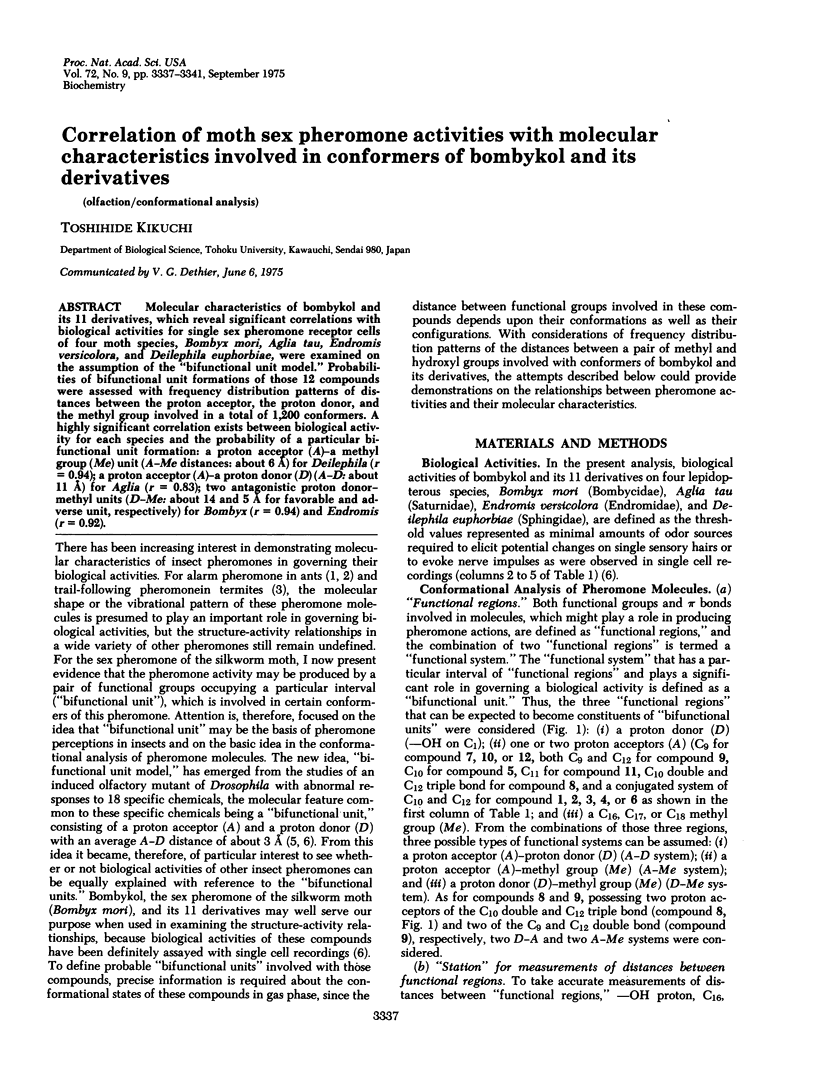
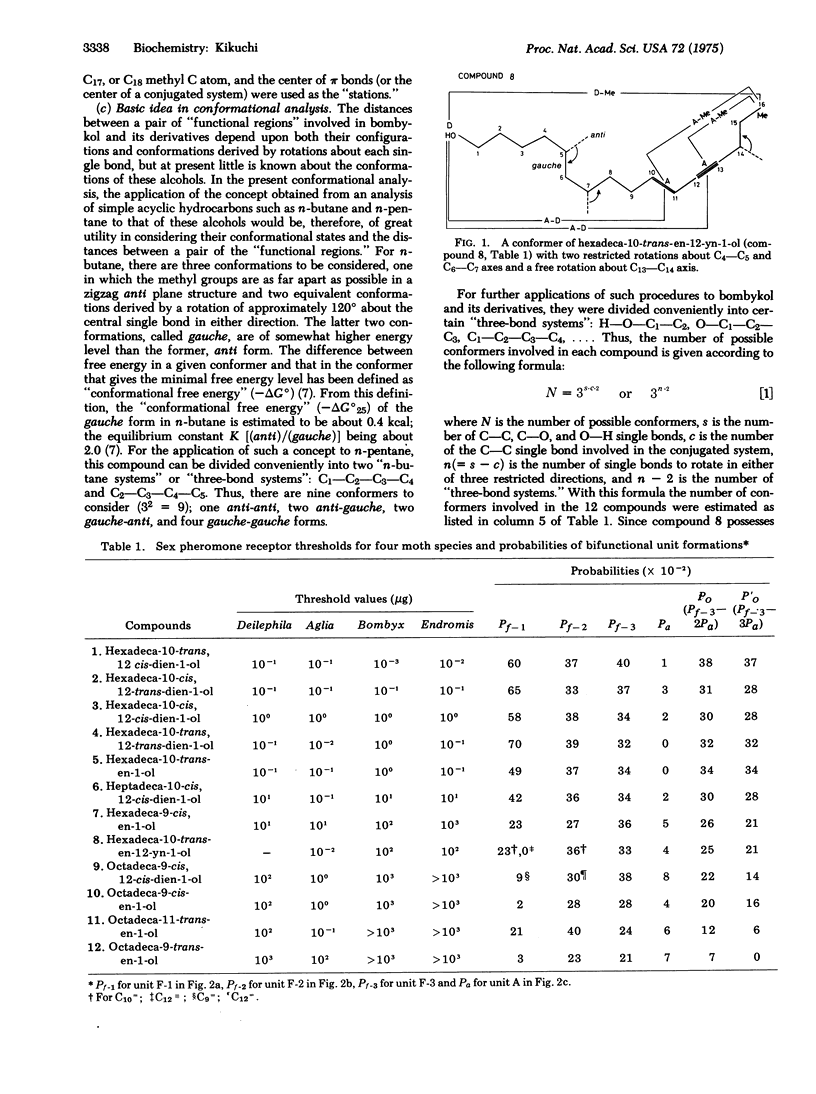
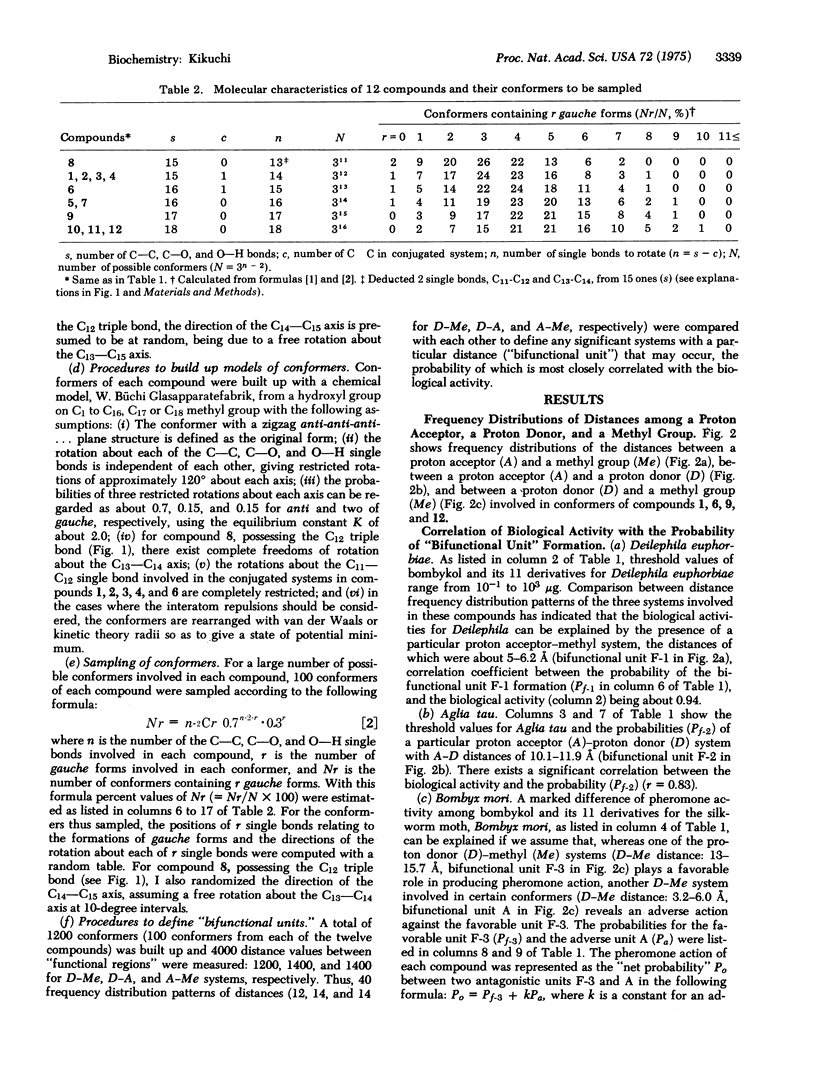
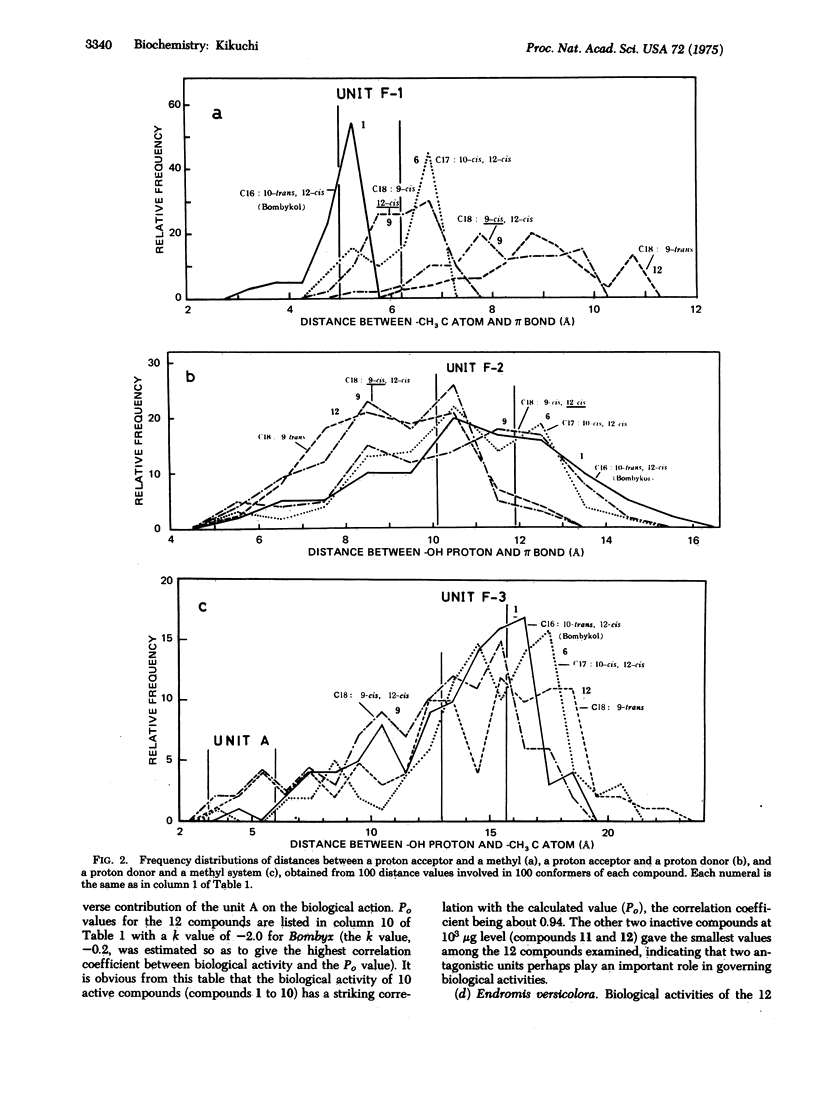
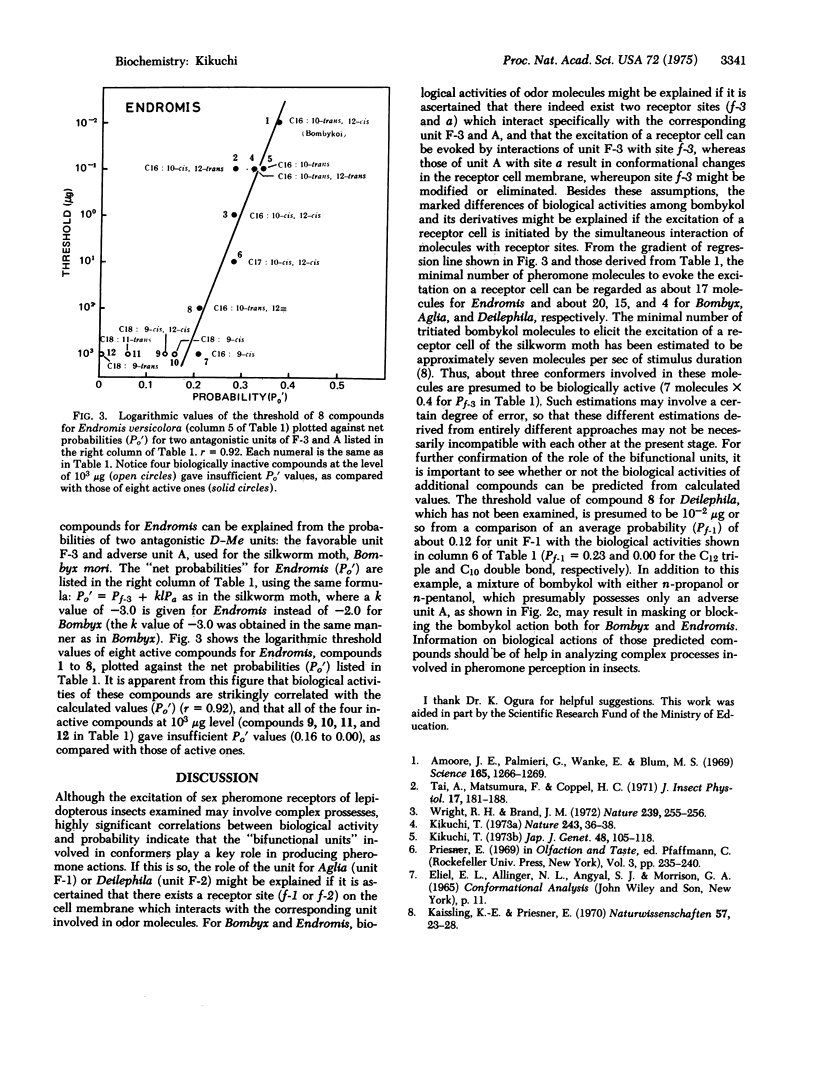
Selected References
These references are in PubMed. This may not be the complete list of references from this article.
- Amoore J. E., Palmieri G., Wanke E., Blum M. S. Ant alarm pheromone activity: correlation with molecular shape by scanning computer. Science. 1969 Sep 19;165(3899):1266–1269. doi: 10.1126/science.165.3899.1266. [DOI] [PubMed] [Google Scholar]
- Kaissling K. E., Priesner E. Die Riechschwelle des Seidenspinners. Naturwissenschaften. 1970 Jan;57(1):23–28. doi: 10.1007/BF00593550. [DOI] [PubMed] [Google Scholar]
- Kikuchi T. Specificity and molecular features of an insect attractant in a Drosophila mutant. Nature. 1973 May 4;243(5401):36–38. doi: 10.1038/243036a0. [DOI] [PubMed] [Google Scholar]


